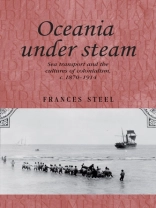The age of steam was the age of Britain’s global maritime dominance, the age of enormous ocean liners and human mastery over the seas. The world seemed to shrink as timetabled shipping mapped out faster, more efficient and more reliable transoceanic networks. But what did this transport revolution look like at the other end of the line, at the edge of empire in the South Pacific?
Through the historical example of the largest and most important regional maritime enterprise – the Union Steam Ship Company of New Zealand – Frances Steel eloquently charts the diverse and often conflicting interests, itineraries and experiences of commercial and political elites, common seamen and stewardesses, and Islander dock workers and passengers.
Drawing on a variety of sources, including shipping company archives, imperial conference proceedings, diaries, newspapers and photographs, this book will appeal to cultural historians and geographers of British imperialism, scholars of transport and mobility studies, and historians of New Zealand and the Pacific.
表中的内容
List of figures
Acknowledgements
List of abbreviations
Maps
Introduction
Part I Afloat
1. Steam’s ‘magic touch’: routes, rivalries and regionalism in the Pacific
2. A ship of the line: cultures of maritime technology
Part II Aboard
3. Crew culture: maritime men in an iron world
4. Labour, race and empire: debating the ‘lascar question’
5. Guardians and troublemakers: confining women at sea
Part III Abroad
6. The tropical challenges of the island trades
7. Sitima days in Suva: wharf labourers and the colonial port
8. Indigenous maritime mobilities under colonial rule
Conclusion
Index
关于作者
Frances Steel is Lecturer in History at the University of Wollongong












